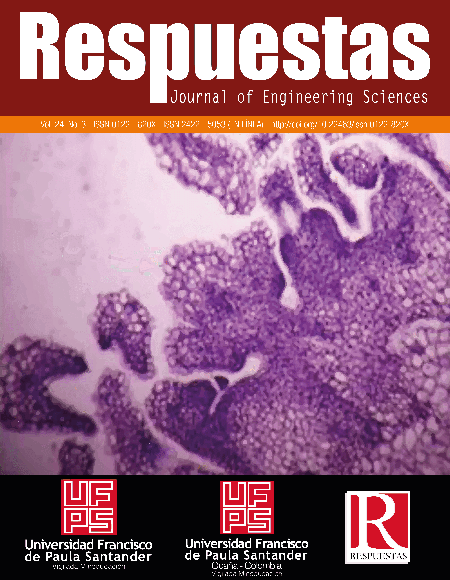Design and implementation of a preliminar dendromorphical or arborescent key for the identification of the botanical families of the arboreal species of San José de Cúcuta
Diseño e implementación de una clave dendromorfa o arborescente preliminar y aplicada para la identificación de las familias botánicas de las especies arbóreas de San José de Cúcuta
Main Article Content
The knowledge in biodiversity and the use of botanical terminology is fundamental for ordering and landscape conservation of a city. In San José de Cúcuta, there is no knowledge of tree arboreal species, leading to an inadequate use of trees, triggering inconveniences in electrical networks, aqueducts and sewage systems. The objective of the study was to design and implement an arborescent (or dendromorphic) key as a methodological tool for the identification of native (or naturalised) tree families located in the urban and peri-urban areas of the city of San José Cúcuta. It was considered preferentially the vegetative characteristics and those peculiarities of the plants that are readily observable such as phyllotaxy, the composition and edges of the leaves, the exudate, the presence of spines or aculeos, the presence or absence of glands, pulvinids or stipes, dead bark and live, smells, colors and scores on the sheets, etc. Once the families were identified through the key, a manual was elaborated describing the essential characteristics for their recognition, which includes detailed and panoramic images, as well as excellent morphological descriptions in order to make a comparison to verify if the identifier corresponds to the family found by implementing the use of the arborescent key. By the identification and management of trees, a diversification and appropriate selection of tree species can be established that can make a useful contribution to the physiological, sociological and economic well-being of urban society, contributing to the region's environmental sustainability strategy. The knowledge of tree species is a foundation to guide and define policies towards the landscape planning of the city, aimed at its protection and conservation, as well as the enjoyment of the benefits and ecosystem services provided by the urban vegetation of the city of San José of Cúcuta, recognized nationally as the "Green City of Colombia".
Downloads
Article Details
E. Escobar. G. De la Cruz. Claves botánicas. Bogotá: Universidad Nacional de Colombia, 1981.
Leguizamo I 1978 Clave dendrológica preliminar para los géneros de las Leguminosas colombianas y aplicable a América tropical. Universidad Distrital Francisco José de Caldas, Bogotá, Colombia.
I. Leguizamo. Clave dendrológica preliminar para los géneros de las Leguminosas colombianas y aplicable a América tropical. Universidad Distrital Francisco José de Caldas, Bogotá, Colombia, 1978.
T. Lasser. T. Clave analítica de las familias. Bogotá: Universidad Nacional de Colombia, 1982.
R. Echeverri. G. Mahecha. Árboles del Valle del Cauca. Cauca: Litografía Arco, 1983
O. Rodríguez. S. Peña. Flora de los Andes Cien especies del altiplano cundiboyacense. Bogotá: CAR, 1984.
F. Molina. J. Sánchez. M. Gonzáles. Guía de árboles de Santa Fé de Bogotá. Bogotá: Tercer Milenio, 1995
G. Galeano. Las palmas de la Región de Araracuara. Bogotá: Corporación Araracuara, Instituto de Ciencias Naturales, Universidad Nacional de Colombia, 1992.
S. Matteuci. A. Colma. Metodología para el estudio de la vegetación. Washington, DC: Organización de los Estados Americanos, 1982
H. García. Flora medicinal de Colombia: Botánica Médica. Bogotá: Instituto de Ciencias Naturales, Universidad Nacional de Colombia, 1974.
P, Font. Diccionario de Botánica. Barcelona: Labor, 1977
J. Almanza. Botánica Agrícola. Tunja: Instituto Universitario Juan de Castellanos, 1997







